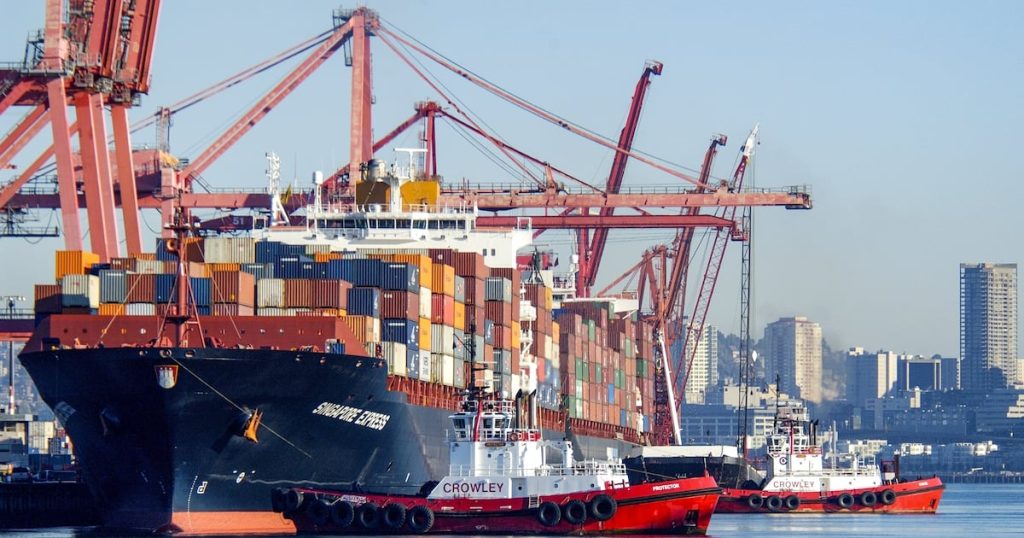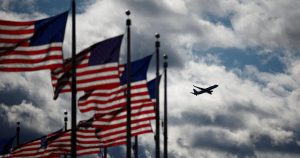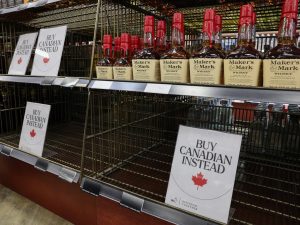For fashion companies caught in the middle of the Trump administration’s long-promised trade war, it’s the uncertainty, rather than any specific tariffs, that’s causing the most pain.
Starting Tuesday, the Trump administration will levy 10 percent duties on imports from China, the White House announced over the weekend.
Additionally, the order seeks to close the “de minimis” trade loophole that allows orders of less than $800 in value to be shipped duty free, which helped fuel the popularity of platforms like Shein and Temu in recent years.
The Trump administration has yet to release the timetable for how and when specific products will be subject to the new tariffs. It also remains to be seen whether the duties will become a permanent cost of trade — as with the 2019 tariffs on Chinese goods that remained in effect even during Joe Biden’s presidency — or are intended as a temporary negotiation tactic.
Already, 25 percent tariffs on Mexican and Canadian imports, originally part of the package announced over the weekend, have been delayed after the two countries struck diplomatic deals Monday to work with the US on border security and drug trafficking. And last week, the Colombian government eased Trump’s threat of a 25 percent tariff on imports from the country by agreeing to the “unrestricted acceptance” of deported migrants from the US.
While the Trump administration is using its unpredictability to press trade partners for concessions, it’s creating major hurdles for retailers. Without knowing which goods will be affected, from which countries, and for how long, it’s hard to make key decisions such as whether to relocate production or raise prices in stores.
“The biggest questions are still on the table,” said Susan Scafidi, professor of fashion law at Fordham University and founder of the Fashion Law Institute. “If this is a negotiation tactic, fashion houses will bite the bullet to take a small short-term loss and likely not pass anything onto consumers.”
Investors are betting the tariffs are here for the long haul. US stock indices fell on Monday morning, though they recovered over the course of the day after a steep initial drop. Brands with production concentrated in China and Mexico, ranging from the cosmetics line e.l.f. to Calvin Klein and Tommy Hilfiger owner PVH and the Western wear seller Boot Barn, were hit hardest.
Still, it could have been worse: On the campaign trail, Trump promised 60 percent tariffs on China. And while the country is still the biggest apparel exporter to the US, its share of the market has fallen sharply in recent years, as companies have sought to diversify their supply chains.
The real test will come later this year, as more products subject to the new tariffs reach store shelves. Much like during the post-pandemic period of high inflation, brands will have to hope their relationship with their customers is strong enough to survive more price hikes.
“For a sector predicated on consumer wants, the tariffs will be tied to which brands have pricing power and which don’t,” said Simeon Siegel, managing director and senior analyst at BMO Capital Markets.
Below, BoF unpacks the evolution of the American fashion supply chain, the companies with highest tariff exposure and other ways in which Trump’s trade policies will manifest in the coming months.
The author has shared a Flourish data chart.You will need to accept and consent to the use of cookies and similar technologies by our third-party partners (including: YouTube, Instagram or Twitter), in order to view embedded content in this article and others you may visit in future.
Since 2019, global fashion companies have already taken steps in diversifying their supply chains to be less dependent on China. According to the US International Trade Commission, the share of apparel imports from China fell from 37.7 percent to 21.3 percent between 2013 and 2023.
Footwear brand Steven Madden, for instance, told analysts in November that it has been developing factories in alternative countries like Cambodia and Vietnam. Its goal for 2025 is to reduce the percentage of goods sourced from China by 40 percent. For now, it is one of the most exposed to Trump’s tariffs, according to a UBS analysis. Shares fell nearly 7 percent on Monday.
However, the inclusion of Mexico in Trump’s latest wave of tariffs complicates things for retailers exploring nearshoring options. “NAFTA made Mexico and Canada a safe harbour, and yet they’re getting targeted now too,” said Stephen Lamar, president and CEO of the American Apparel & Footwear Association.
Chart by Marc Bain.
The author has shared a Flourish data chart.You will need to accept and consent to the use of cookies and similar technologies by our third-party partners (including: YouTube, Instagram or Twitter), in order to view embedded content in this article and others you may visit in future.
Retailers’ exposure to the tariffs will differ based on how much of their goods are sourced from China, Mexico and Canada. USB analyst Jay Sole predicts in a note published Tuesday that footwear brands Boot Barn and Steven Madden will have the highest exposure to tariffs, alongside Stitch Fix, Kontoor Brands and The Buckle, Inc. Boot Barn will likely see the highest increase in its cost of goods sold at 9 percent, the note said. The retailer’s stock plunged nearly 10 percent on Monday, one of the worst performances of any fashion company.
Not every brand will be able to pass these costs onto the consumer, according to Siegel. Only those with strong brand equity can raise prices without hurting sales, he said. Those without must figure out a way to absorb the tariffs by eliminating expenses elsewhere or figure out ways to share the impact with supply partners.
Typically, dates and details around the implementation of tariffs, including how different classifications of products — knit versus woven, for instance — are published when the tariffs are announced, according to AAFA’s Lamar. This time, however, these details have not been made public. Lamar recommends retailers take a measured approach to taking action, wait for concrete clarification from US Customs and the Trade Commission, and engage with trade organisations to stay informed.
Chart by Marc Bain.
The author has shared a Flourish data chart.You will need to accept and consent to the use of cookies and similar technologies by our third-party partners (including: YouTube, Instagram or Twitter), in order to view embedded content in this article and others you may visit in future.
An increase in costs of goods sold will ultimately result in higher prices. Inflation has cooled since a peak in 2022, but has crept up again in recent months, falling short of the Federal Reserve’s target of 2 percent year-on-year.
In December, the 12-month percentage rate for inflation excluding food and energy exceeded 3 percent, not seasonally adjusted. Once the tariffs go into effect, inflation will be exacerbated, analysts said.
A 10 percent additional increase, for instance, does not mean retail prices will rise by only 10 percent, according to Footwear Retailers and Distributors of America, another fashion trade organisation. A 10 percent tariff means costs of goods sold will increase by 10 percent, but in the retail markup calculation, that 10 percent will be multiplied by 2 or 2.5 times, resulting in a 25 percent increase in the final retail price.
Global e-commerce exports from China have grown tenfold over the past five years, according to the US Congressional Research Service. In 2023, exports of low-value single packages from China, serviced by sites like Temu and Shein, reached $66 billion.
This was made possible by a policy known as the de minimis exemption. In 2016, Congress raised the threshold for duty-free exemption from $200 to $800, which fuelled the barrage of packages shipped directly from China into the US.
Combined transactions from Temu, operated by parent company PinDuoDuo, and Shein make up 17 percent of the discount market in the US, according to the Congressional Research Service. Eliminating the de minimis exemption will dramatically disrupt their business model and value proposition to American consumers. This means domestic competitors such as Walmart and Amazon as well as brick-and-mortar discounters like Dollar Tree will benefit with market share gains.
“Shein has a competitive advantage because of its on-demand model and not the de minimis rules,” Shein executive Donald Tang told BoF in September. “The efficiency and the wide choice we provide gives the company not just a few points advantage, but a significant advantage.”
We’re about to find out if that’s true.








